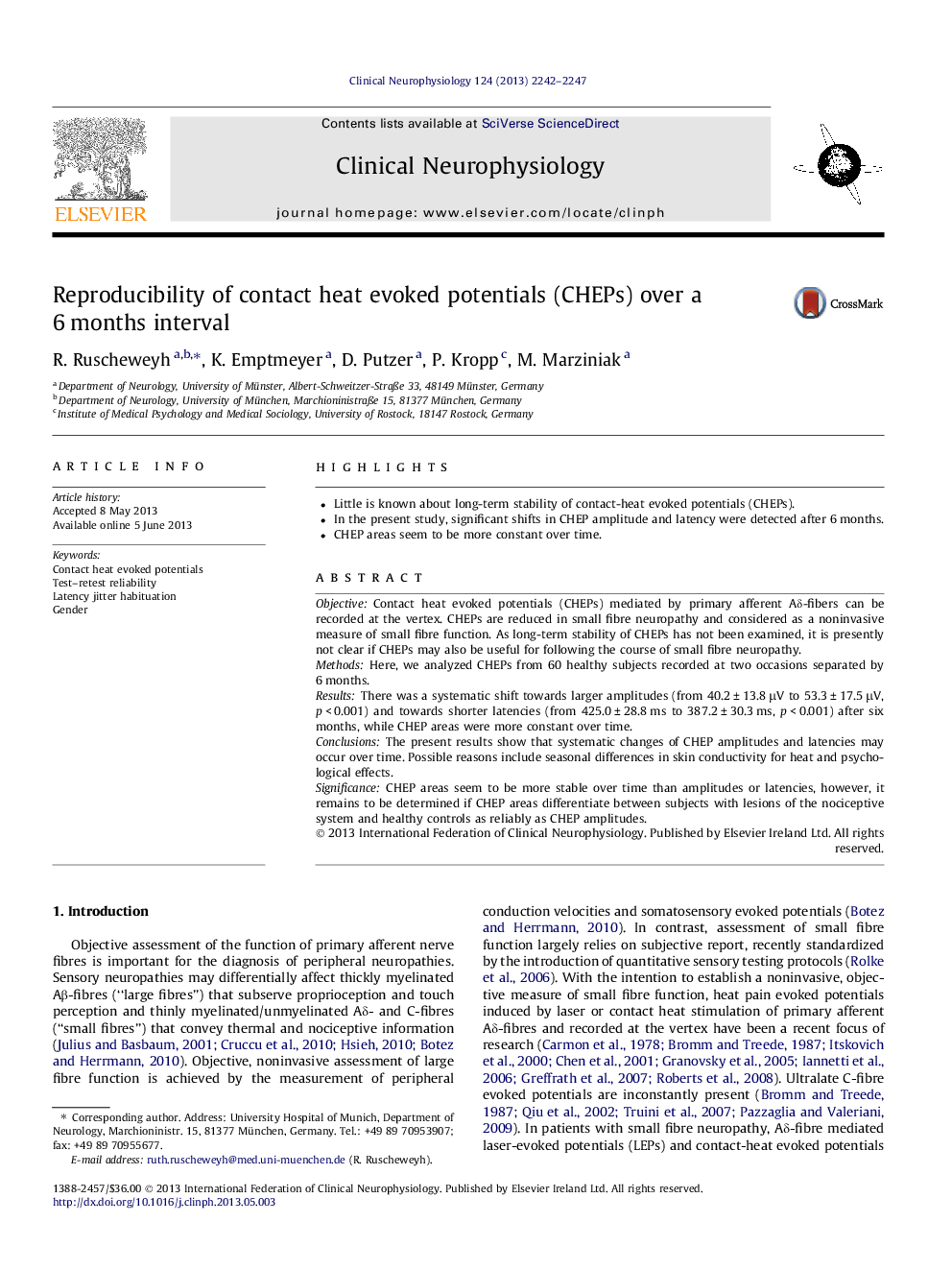| Article ID | Journal | Published Year | Pages | File Type |
|---|---|---|---|---|
| 3043326 | Clinical Neurophysiology | 2013 | 6 Pages |
•Little is known about long-term stability of contact-heat evoked potentials (CHEPs).•In the present study, significant shifts in CHEP amplitude and latency were detected after 6 months.•CHEP areas seem to be more constant over time.
ObjectiveContact heat evoked potentials (CHEPs) mediated by primary afferent Aδ-fibers can be recorded at the vertex. CHEPs are reduced in small fibre neuropathy and considered as a noninvasive measure of small fibre function. As long-term stability of CHEPs has not been examined, it is presently not clear if CHEPs may also be useful for following the course of small fibre neuropathy.MethodsHere, we analyzed CHEPs from 60 healthy subjects recorded at two occasions separated by 6 months.ResultsThere was a systematic shift towards larger amplitudes (from 40.2 ± 13.8 μV to 53.3 ± 17.5 μV, p < 0.001) and towards shorter latencies (from 425.0 ± 28.8 ms to 387.2 ± 30.3 ms, p < 0.001) after six months, while CHEP areas were more constant over time.ConclusionsThe present results show that systematic changes of CHEP amplitudes and latencies may occur over time. Possible reasons include seasonal differences in skin conductivity for heat and psychological effects.SignificanceCHEP areas seem to be more stable over time than amplitudes or latencies, however, it remains to be determined if CHEP areas differentiate between subjects with lesions of the nociceptive system and healthy controls as reliably as CHEP amplitudes.
